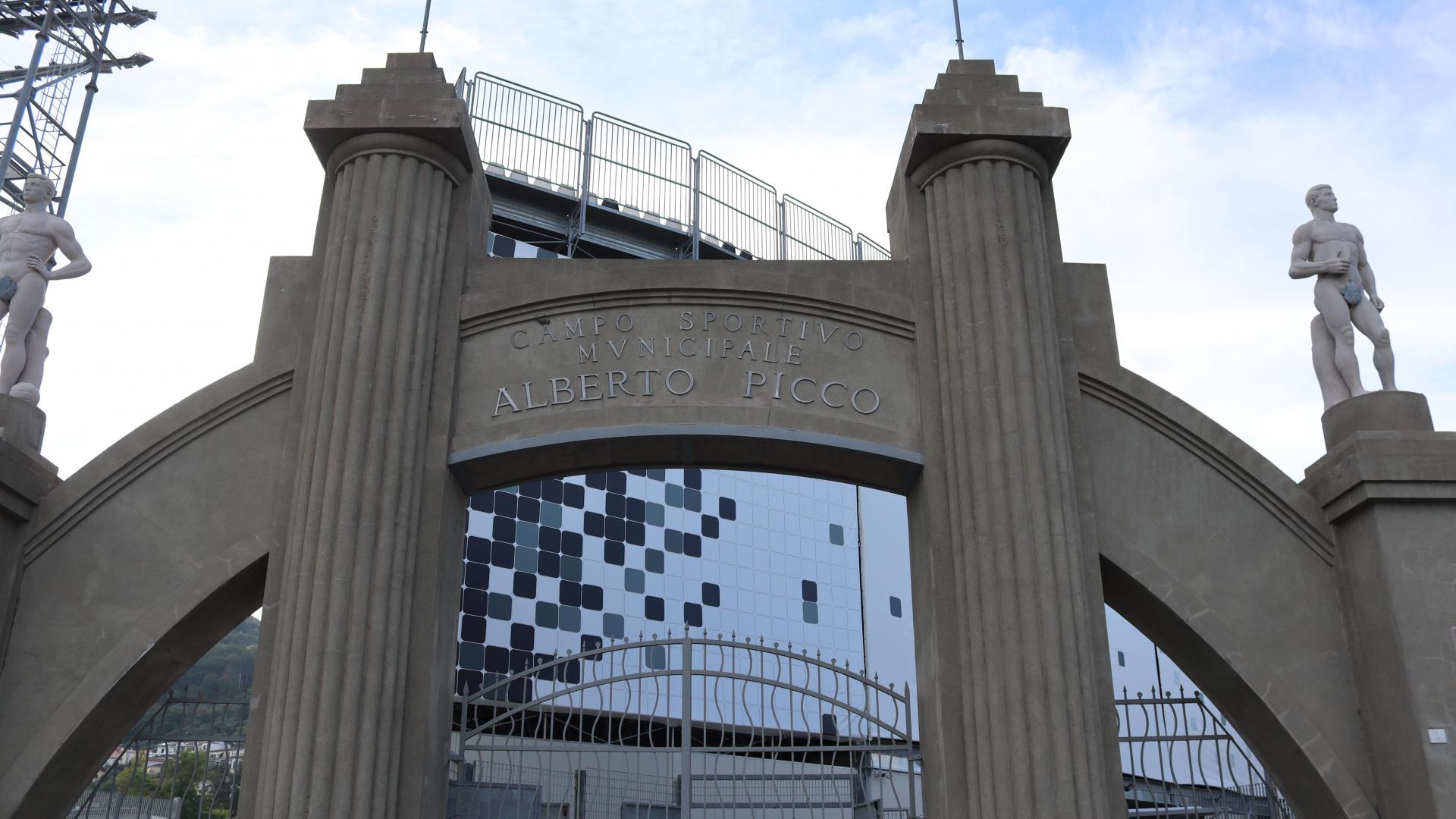Regulations for the display of banners
The Spezia Calcio company, having taken note of what is stated by the National Observatory on Sporting Events (Determinazione n.14 of 08 March 2007), intends to make known to all its supporters, the procedure for being able to introduce inside the stadium a banner or organize a choreography:
1. Fill out the attached FORM clearly and legibly;
2. Attach photographic documentation and identity document;
3. Send the form duly completed and signed at least 7 working days before the match by email (progetto-etico@acspezia.com) or directly to the office, in Via Melara 91, c/o C.S. 'Bruno Ferdeghini', La Spezia;
4. All complete requests will be viewed by Spezia Calcio who will forward them to the competent authorities for approval.
The same procedure should also be followed for the introduction of drums and/or megaphones.
Please note that, according to the current instructions:
- It is forbidden to introduce banners and any other similar material in all sports facilities, including choreographies, unless expressly authorized.
- Within the limits established by the sports societies, it will be possible to introduce and display banners containing writings in support of one's own team for the scheduled match, by sending, at least 7 days before the match, a specific request, also by fax or e-mail, to the society who organizes the match, indicating one's complete personal details.
It will be required to specifying the following details:
1. the dimensions and the material used for the realization;
2. the content and the graphic summarized in appropriate photographic documentation;
3. the sector in which the banner will be exhibited
The same protocol must be applied to flags, except for those bringing only the team colors and those of the countries represented on the field.
For choreographies, in addition to the above, the methods and times of implementation must be specified, meaning that this activity must in any case be completed before the start of the competition.
The Company will inform, without delay, the Manager of the G.O.S., who, having obtained the opinions of the authorities concerned (Fire Brigade and, where present, the Chief of Stewards), will, no later than 5 days after the day of the match, grant the "nulla osta", on condition that:
1. the applicant(s) for the display of the material of choreography is/are identified;
2. within the group identified by the material there are not one or more persons subject to a ban on access to sports facilities
3. there are no impediments from the standpoint of public order and safety
4. there are no impediments from the standpoint of public safety and fire safety.
Il nulla osta potrà essere concesso anche per l’intera stagione ed essere revocato, fatte salve le prerogative della società che ha accordato l’autorizzazione, qualora uno o più appartenenti al gruppo vengano colpiti da Daspo o si rendano responsabili di episodi di intemperanza o violazioni delle prescrizioni previste dal Regolamento d’Uso;
The authorization can also be granted for the entire season and can be revoked if one or more members of the group are hit by Daspo or are responsible for episodes of intemperance or violations of the provisions of the Regulations of Use;.
In any case, it is forbidden to display material which, due to its size, obstructs the visibility of other supporters, forcing them to assume a standing position.
La società che ospita l’incontro, a cui è demandata ogni attività di verifica inerente la specifica materia, comunicherà per iscritto le determinazioni assunte al richiedente, con l’avviso che:
The company hosting the match, which is entrusted with all verification activities relating to the specific matter, will communicate in writing the determinations made to the applicant, with the notice that:
1. the authorized material must be introduced inside the facility at least 1 hour before the opening of the gates, specifying the access gate;
2. no material, even if authorized, will be allowed to enter after the gates have been opened to the public;
3. banners may only be affixed in the space specifically assigned by the company, which must therefore verify compliance with the requirements with its own staff;
4. the display of material different than that authorized entails the immediate removal and expulsion from the facility of the offender(s) to whom the regulations regarding the prohibition of access to sports facilities may be applied, as well as the revocation of the authorization to display the club's identification banner;
5. at the end of the stream, the authorized material must be removed and, where required, also through the stadium's sound communication system, entirely re-presented at the indicated gate.
Click here to download the form












Cookie per Social Networks
Si tratta dei cookie che consentono di condividere anche con altri utenti i contenuti del sito che si sta visitando. Sono i cookie tipicamente utilizzati per attivare le funzioni “Mi piace” o “Segui” dei Social Network quali Facebook e Twitter, solo per citarne alcuni. Queste funzioni consentono ai Social Network di identificare i propri utenti e raccogliere informazioni anche mentre navigano su altri siti.